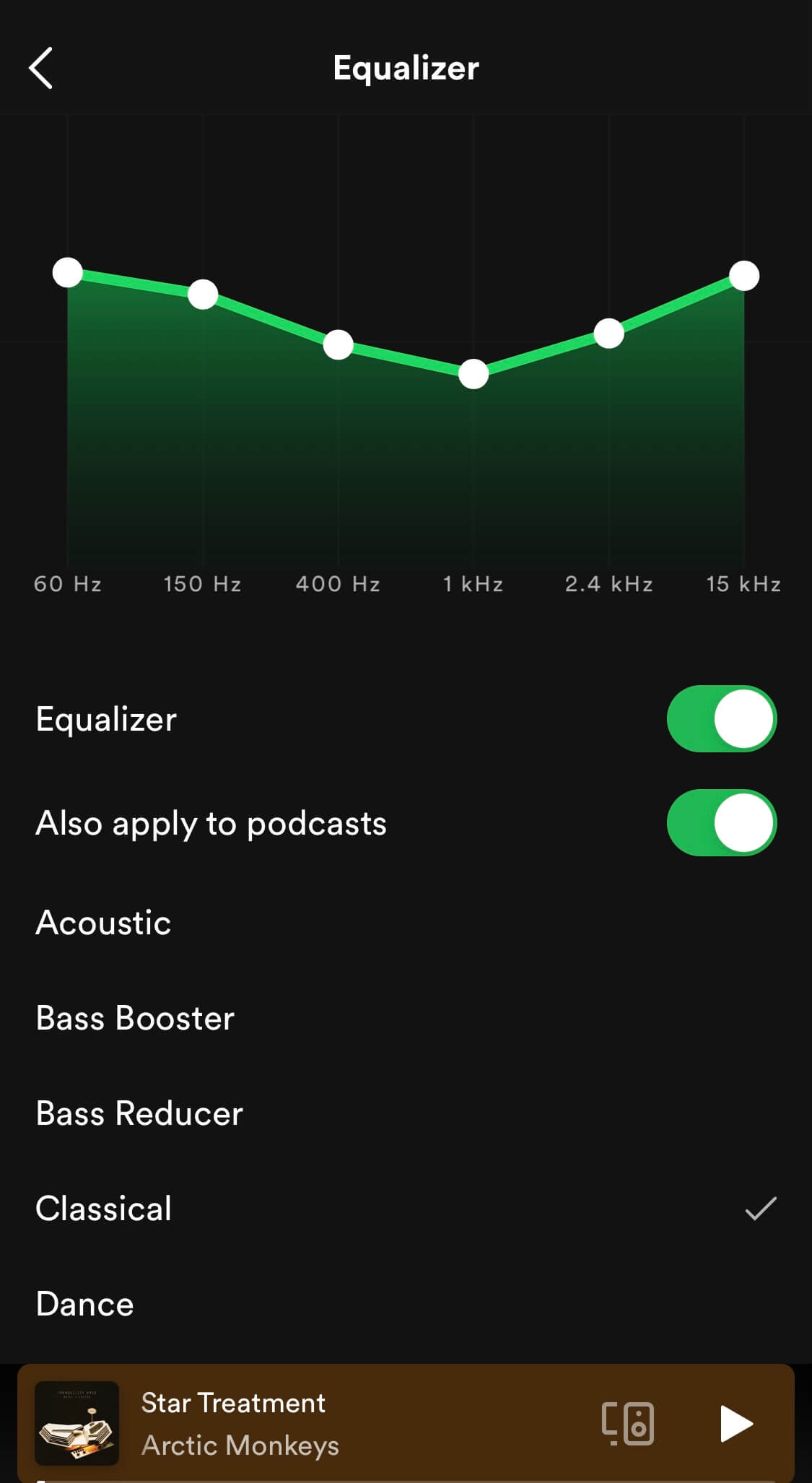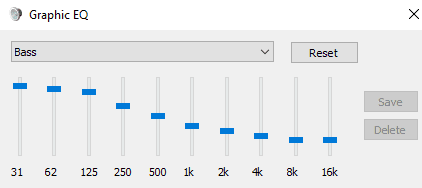

Reduce 230Hz by 4dB for a balanced sound. Mid-range (910Hz) should remain unaltered. For instance, you can increase 16 kHz by 4dB and 4 kHz by 2dB (within a meter range of 10dB). You can raise the high frequencies to improve clarity. The remaining frequency ranges fall under the mid-range, which adds a touch of clarity to the music.

The Treble is represented by the highest frequency bar (14 kHz), and the Bass is represented by the lowest frequency bar (60 Hz).
Spotify best equalizer settings for bass android#
There are normally five frequency bars covering a range from 60Hz to 14 kHz in the Android equalizer. However, in my opinion a neutral setting for the equalization in your car works best because it is compatible with a variety of music genres and podcasts. Consider increasing the mid frequencies and highs by +2 or +4, and give the bass a +4 boost to really feel the music. If you’re a fan of bass-heavy tunes like hip-hop or electronic dance music, a little boost can work wonders. However, if you like enhanced treble, your car stereo will play audio from 8000 to 15000 Hz. For example, if you want high bass, your car stereo will have a frequency from 90 to 200 Hz. This will enable you to adjust the frequencies that you like. Next, you should ensure the equalizer settings for car stereo. This will enable Spotify to stream music at a higher bit rate per second. The first one would be to turn off the data saver mode. If you are using Spotify to play music in your car, you must cross-check a couple of things. This combination adds an extra kick to the low end and enhances the overall audio experience.

So, whether you’re tweaking your equalizer settings for a laptop or speakers, finding the right balance can truly elevate your music enjoyment.įor my taste, I simply select Bass, Clarity, and Tube Amp (found on the Advanced Page), without tinkering with individual frequencies. This ensures that all frequencies are well-represented and create a more pleasant listening experience overall. On the other hand, if you’re using speakers that already have plenty of bass, you can achieve a nice balance by turning up the highs a bit. This helps compensate for the natural limitations of laptop speakers and add some depth to your sound. If you’re using regular laptop speakers, a good tip is to boost the bass a bit while reducing the mid frequencies. When it comes to setting up the Spotify equalizer for your speakers, it’s important to consider the specific devices or music genres you’re dealing with. Best Spotify Equalizer Settings for Speakers: This will make the vocals stand out and add that extra crispness to the singer’s voice. On the other hand, if you’re craving more clarity in the vocals, you can enhance the mid-range frequencies like 500 Hz, 1 kHz, or 2 kHz.

By giving those bass frequencies a boost, you’ll feel the thump and rumble in your music. If you like bass-driven genres like hip-hop or EDM, you can easily do that by raising the levels of the lower frequency bands like 60 Hz or 100 Hz. It’s a great tool for shaping the music just the way you like it! By moving these sliders up or down, you can make specific frequencies louder or softer, enabling you to customize the overall sound to suit your personal taste. It consists of sliders that represent various ranges of sound, such as bass, mid-range, and treble. The Spotify equalizer lets you adjust the balance of different frequencies in your favorite songs or podcasts. This feature allows personalize the sound output according to your preferences and surroundings by adjusting the frequencies of midrange, treble, and bass levels. Fortunately, there exists a method to greatly enhance your listening experience: utilizing the built-in equalizer feature of Spotify streaming service. Purchasing high-quality headphones & Airpods can be pricey if you want an improved Spotify listening experience. I would like you to give following setup a try,


 0 kommentar(er)
0 kommentar(er)
